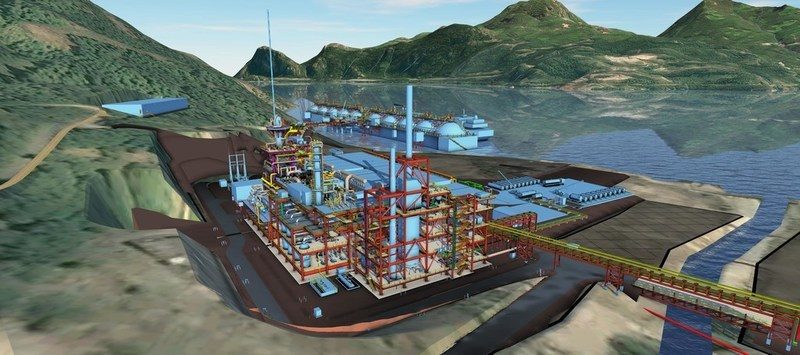The future is looking brighter for Canada’s emerging LNG industry, with a second project, Woodfibre LNG, getting the green light to go ahead and a major expansion now being considered for the LNG Canada plant that is under construction.
It’s no surprise given the red-hot global market for LNG. Last year LNG prices increased by 435 per cent compared to 2020, driven by strong demand in Asia and Europe, according to energy analysts with consultancy McKinsey & Company.
And then came Russia’s war on Ukraine, putting in question the future of a major source of gas and LNG.
“The Russian invasion of Ukraine has led to a real open question on what happens to Russian LNG,” says Ian Archer, associate director of gas, power and climate solutions with S&P Global.
“There is an opportunity now for more LNG supply overall, and Canada could play a role in providing it.”

Long-term demand
LNG is not a short-term opportunity. Even with COVID lockdowns, world LNG demand rose to 380 million tonnes in 2021, up from 360 million tonnes in 2020, according to Shell’s latest LNG outlook. Demand is expected to nearly double by 2040, crossing over 700 million tonnes.
“I think what we are seeing is the world starting to realize that natural gas is an absolutely critical part of not just the energy mix, but the clean energy mix,” says Rebecca Scott, communications director with Woodfibre LNG, a Vancouver-based subsidiary of Singapore’s RGE Group.
The project has issued “notice to proceed” to its main contractor, McDermott International.
“For all intents and purposes, a notice to proceed is really the final go ahead for us to move into construction,” Scott says.
The $1.6 billion Woodfibre LNG project is being built on the site of a 100-year-old pulp mill near Squamish, B.C. Since 2017 work has been ongoing to clean up contamination, Scott says. The project’s $625 million budget for this year includes $25 million for ongoing remediation.
“We can’t put shovels in the ground to start building until we have finished that contamination cleanup, so that’s the focus for the next 12 to 18 months,” she says. Meanwhile, the project will work to get “a bit of a head start” on detailed engineering.
Major construction is expected in 2023, with “substantial completion” following in 2027.

Extra-low GHG LNG
Despite being relatively small, producing 2.1 megatonnes of LNG per year, Woodfibre is expected to make an outsized difference reducing emissions for its customers in Asia.
When used to replace coal-fired electricity, the LNG produced at the Woodfibre facility will reduce 3.5 million tonnes of CO2 equivalent per year, the company says. That means 87.5 megatonnes total over the project’s 25-year lifespan, over 27 times more emissions reduced in Asia than Woodfibre will produce in Canada over the same period.
The project is expected to have the lowest emissions of any LNG plant in the world, even lower than the bar set by the LNG Canada project.
LNG Canada is expected to generate 0.15 per cent CO2 emissions per tonne of LNG, less than half the global average of 0.35 per cent per tonne, according to a report by Oxford Energy Institute.
The smaller Woodfibre LNG project, powered by low-emissions hydroelectricity, would have an even smaller footprint of 0.04 per cent emissions per tonne of LNG, the company says.

In demand
The natural gas for the project will be sourced from Pacific Canbriam Energy, another RGE subsidiary. In 2021 Pacific Canbriam received third party certification for excellence in environmental and social responsibility from New York-based nonprofit Equitable Origin.
“When you can have a product like Canadian LNG, which is leaps and bounds ahead of really every other jurisdiction in the world in terms of responsibility and sustainability and stability, that product comes in incredibly high demand,” Scott says.
Woodfibre has deals in place to sell 70 per cent of its LNG to global manager BP Gas Marketing.
Scott says Canada can make a meaningful impact to help lower global emissions by exporting LNG.
“As a global emitter, Canada only contributes 1.6 per cent of the world’s emissions. If we just went dark and didn’t emit a single molecule of CO2 and reduced our emissions to zero, China’s growth would eat up that percentage in less than a year,” she says.
“The question becomes not how we lower our own emissions, because really that’s just a drop in the ocean, [but] how we help higher emitting countries lower their emissions. That’s where Canadian LNG has such a huge role to play.”
The challenge will be building more pipelines to enable projects to proceed, says S&P Global’s Archer.
“We do have cheap, plentiful supplies of natural gas both in northeast B.C. and throughout Alberta. And we do have shorter shipping distances to Asia. But what we have is very limited infrastructure to connect those two points.”
The unaltered reproduction of this content is free of charge with attribution to Canadian Energy Centre Ltd.
